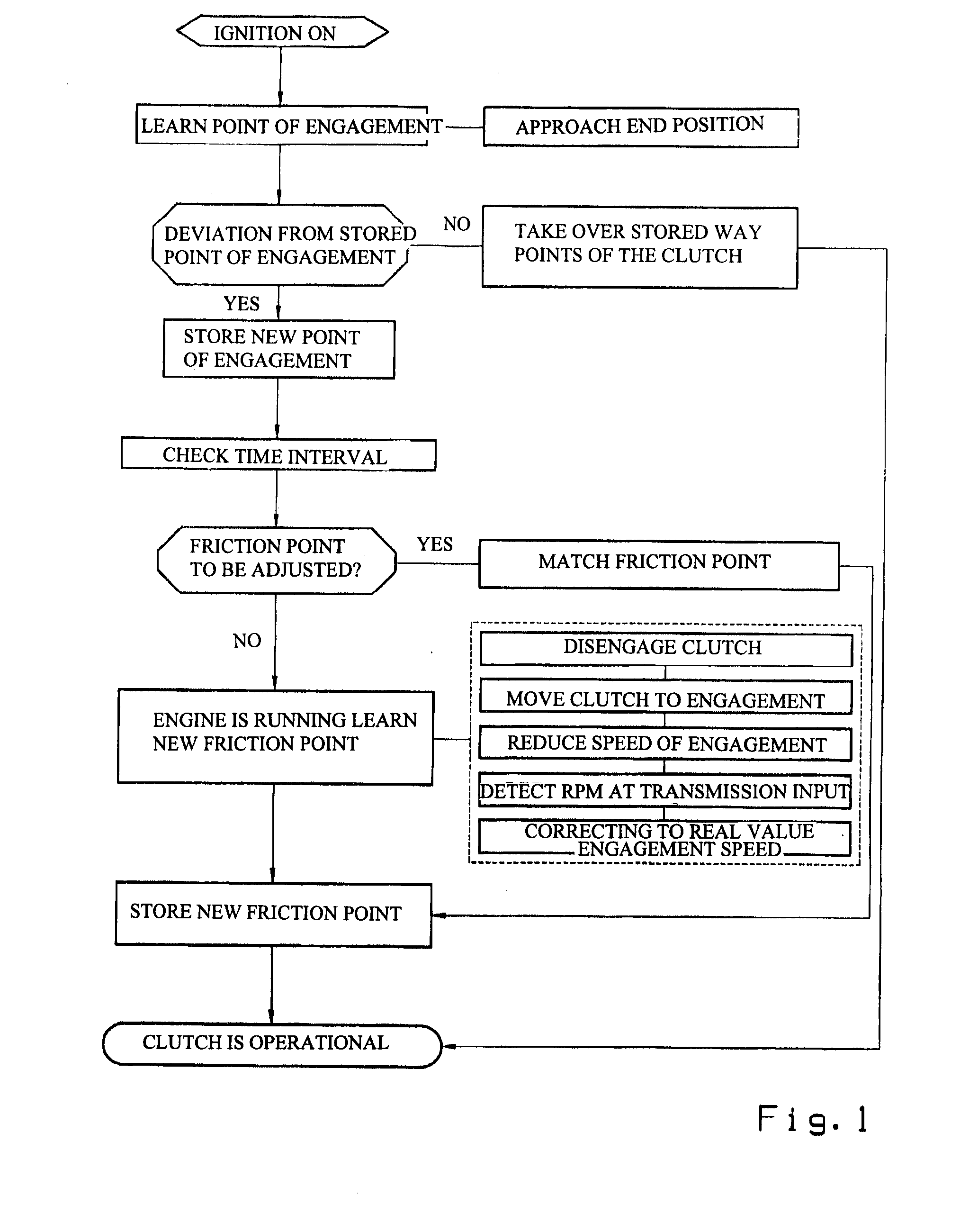Method and device for controlling a clutch
a technology of clutch and control device, which is applied in the direction of fluid couplings, instruments, couplings, etc., can solve the problems of unnecessarily delayed driver's intent for fast starting and shifting, etc., and achieve fast starting gear shift, short time, and avoid unnecessarily long learning time for clutch
- Summary
- Abstract
- Description
- Claims
- Application Information
AI Technical Summary
Benefits of technology
Problems solved by technology
Method used
Image
Examples
Embodiment Construction
[0041]Therefore, FIG. 1 presents the sequence for establishing an operational readiness of an automatic friction clutch as part of the motor vehicle drive train. Hereby and initially, when the vehicle is stationary and the ignition is turned on, the engagement position of the activation way point of the clutch is learned. This takes place through activating the clutch actuator of an already, possibly engaged clutch, in the direction of engagement until the reaching of a final position where no further way point change takes place. The learned point of engagement is compared with the last stored point of engagement. If the new point of engagement at least approximately matches the stored way point, a new learning of the friction point is waived and the last stored clutch way point coordinate system, having the point of engagement and the friction point of the last learning process, are utilized. Immediately hereafter, the clutch moves in the state of operational readiness.
[0042]If th...
PUM
 Login to View More
Login to View More Abstract
Description
Claims
Application Information
 Login to View More
Login to View More - R&D
- Intellectual Property
- Life Sciences
- Materials
- Tech Scout
- Unparalleled Data Quality
- Higher Quality Content
- 60% Fewer Hallucinations
Browse by: Latest US Patents, China's latest patents, Technical Efficacy Thesaurus, Application Domain, Technology Topic, Popular Technical Reports.
© 2025 PatSnap. All rights reserved.Legal|Privacy policy|Modern Slavery Act Transparency Statement|Sitemap|About US| Contact US: help@patsnap.com



